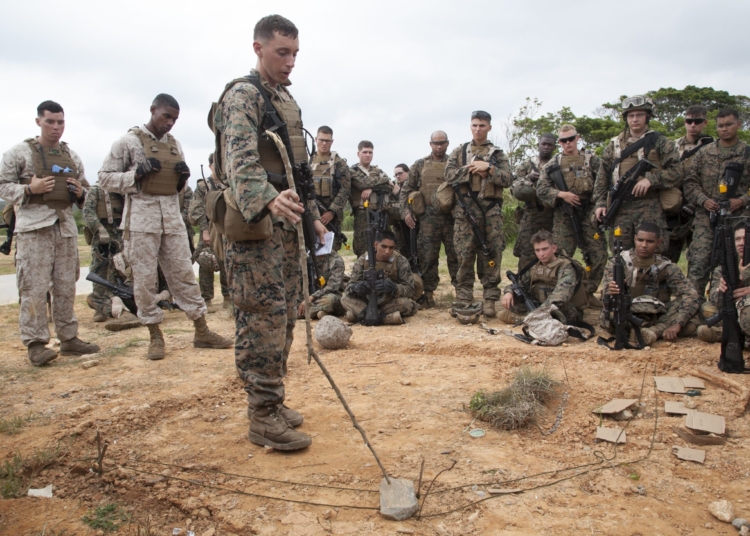Military simulations play a crucial role in training soldiers for modern warfare. These simulations replicate the conditions and complexities of real-life combat situations, allowing military personnel to test different strategies and tactics without the risks associated with actual combat. Military simulations are particularly effective in developing and honing strategic and tactical skills, offering a platform for commanders to practice decision-making abilities and for soldiers to familiarize themselves with different battlefield tactics. These simulations facilitate collaborative training, promoting teamwork, coordination, and effective communication between different units. They also offer cross-training opportunities, broadening soldiers’ perspectives and equipping them with skills beyond traditional combat. Additionally, military simulations provide a cost-effective and risk-reducing alternative to large-scale field exercises. Overall, military simulations contribute to the readiness and effectiveness of armed forces worldwide.
Training for Victory: How Military Simulations Sharpen Strategic and Tactical Skills
Introduction
In modern warfare, strategic planning and tactical decision-making are critical for achieving victory on the battlefield. To prepare soldiers for the complex challenges they are likely to face, military simulations play a crucial role in training. These simulations provide a controlled environment where military personnel can simulate real-world scenarios, allowing them to sharpen their strategic and tactical skills in a safe and cost-effective manner.
The Role of Military Simulations
Military simulations are designed to replicate the conditions and complexities of real-life combat situations. By utilizing advanced technologies, simulations offer soldiers an immersive experience that closely mirrors the challenges they may encounter in the field. These simulations allow military personnel to test different strategies and tactics, evaluate potential outcomes, analyze their performance, and make adjustments without the risks associated with actual combat.
Strategic Skill Development
Military simulations are particularly effective in developing and honing strategic skills. They provide a platform for commanders to practice their decision-making abilities, fine-tune their strategic thinking, and learn how to adapt their plans based on shifting circumstances. By simulating various scenarios, personnel can explore different avenues and assess the potential consequences of their choices. This iterative process enables commanders to develop better judgment and make informed decisions even under intense pressure.
Tactical Skill Development
Simulations also play a crucial role in the development of tactical skills. They allow soldiers to practice their battlefield tactics, familiarizing themselves with the intricacies of different equipment, weapons, and formations. These simulations often involve virtual reality or computer-generated environments, enabling soldiers to engage in realistic combat situations while receiving immediate feedback on their performance. By repeatedly confronting tactical challenges in simulations, soldiers can refine their skills, improve coordination, and enhance their overall combat effectiveness.
Collaborative Training
Military simulations facilitate collaborative training, allowing multiple units and commanders to participate in the same exercise. This collaborative environment fosters teamwork, coordination, and the ability to communicate effectively between different units. It enables soldiers to understand the roles and responsibilities of other units, promoting integration and cohesion. The simulation scenarios can also simulate joint operations between different branches of the military, enhancing inter-service cooperation and interoperability.
Cross-Training Opportunities
Besides training soldiers in specific combat scenarios, military simulations offer cross-training opportunities. For example, simulations can simulate non-military situations such as humanitarian missions or disaster response efforts. This broadens soldiers’ perspectives and equips them with skills beyond traditional combat. Cross-training improves adaptability and flexibility, enabling soldiers to respond effectively to unexpected situations or unconventional warfare scenarios.
Cost-Effectiveness and Risk Reduction
Military simulations provide a cost-effective alternative to conducting large-scale field exercises. Traditional training exercises often require extensive resources, such as fuel, ammunition, and equipment. Simulations significantly reduce these costs while still providing realistic training opportunities. Additionally, simulations allow soldiers to face potential risks in a controlled environment, minimizing the potential for injury or casualties compared to live training exercises.
Conclusion
Military simulations have become invaluable tools for training soldiers, enabling them to sharpen their strategic and tactical skills. These simulations create realistic environments where military personnel can refine their decision-making abilities, practice battlefield tactics, foster collaboration, and broaden their skillsets. By combining technology, teamwork, and effective training methodologies, military simulations contribute to the readiness and effectiveness of armed forces worldwide, ultimately leading to victorious outcomes on the battlefield.













